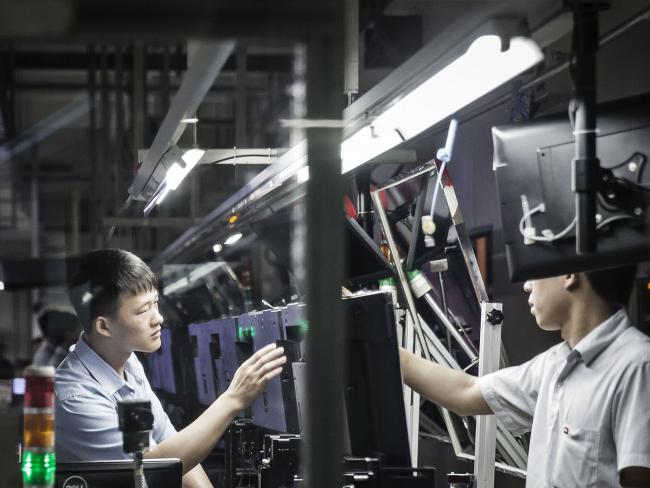(Bloomberg) -- The case for Chinese policy makers to ramp up stimulus grew stronger, as tepid domestic demand and falling commodity prices increase the risk of a return to factory deflation.
Growth in China’s producer price index slowed to zero in June from a year earlier, the weakest reading in almost three years. Prices fell 0.3% from May. The downward trend accentuates fears of a return of deflation for manufacturing, which would erode company profits and increase debt repayment pressures.
The prospect of falling prices adds to the case for the People’s Bank of China to increase stimulus to the economy, with policy makers keen to keep output stable amid restarted trade talks with the U.S. The government will release gross domestic product and other data for the second quarter on July 15.
Factory prices have “fallen faster than I expected, and if they continue to decelerate, it means overall domestic demand is weak,” said Liu Peiqian, Asia strategist at Natwest Markets Plc in Singapore. “While a single month’s data wouldn’t be enough to alter their monetary policy stance, the PBOC will likely take swift actions if it continues to drop at a rapid pace.”
On the other hand, consumer prices stabilized at 2.7% year-on-year, the same as in May and in line with estimates. Core inflation, excluding volatile food and energy prices, remained at 1.6%.
What Bloomberg’s Economists Say
China’s June price data intensify our concern that the industrial sector is slipping back into deflation. That is likely to get the PBOC’s attention because of the potential damage to industrial enterprises’ profits -- and the negative spillover that has on the economy. The divergence of consumer and factory prices will also put a squeeze on profits.
PPI is likely to go below zero, and this will increase pressure on the central bank.
-- David Qu, Bloomberg EconomistFor the full note, click here
Historically, lower producer prices in China put pressure on the global inflation outlook as export prices usually follow those at factory gate. If that also holds true this time, it would add to global concerns on growth and raise questions about what other central banks will do.
Given concerns over domestic asset price bubbles and the fragile yuan, China is unlikely to embark on an aggressive cycle of cuts to the benchmark one-year lending rate. Economists have dialed up expectations that the PBOC will reduce the amount of cash banks have to deposit with the central bank, according to a recent survey by Bloomberg. Borrowing costs of the PBOC’s daily open market operations are also seen declining.
U.S. Federal Reserve Chairman Jerome Powell’s scheduled testimony to Congress later on July 10 will also provide clues as to China’s room to maneuver on domestic policy.
“The PBOC and the economy will likely maintain an easing bias, rather than tightening,“ Chang Jian, Barclays (LON:BARC) Bank PLC’s chief China Economist said on Bloomberg TV, noting that the central bank has been providing the markets with liquidity after the takeover of a small lender caused inter-bank lending issues.
“We do see some downward pressures to the data coming next week,” she said.
